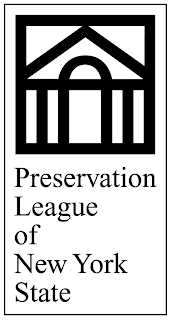 The Adirondack Mountain Club (ADK) supports the preservation of the vast majority of Adirondack fire towers, but concurs with the Department of Environmental Conservation’s conclusion that the towers on St. Regis and Hurricane mountains are non-conforming uses and should be removed, according to a recently issued press release.
The Adirondack Mountain Club (ADK) supports the preservation of the vast majority of Adirondack fire towers, but concurs with the Department of Environmental Conservation’s conclusion that the towers on St. Regis and Hurricane mountains are non-conforming uses and should be removed, according to a recently issued press release.
“Fire towers are an important part of the Adirondacks’ history and culture and provide important educational and recreational benefits,” said Neil Woodworth, ADK’s executive director. “For the hiking public, which ADK represents, a fire tower can provide the reward of a panoramic view after a demanding climb. But Hurricane and St. Regis already have spectacular views, so even if these towers were open, they would add nothing to visitors’ experience of these summits.” Here is the rest of the club’s press release:
For nearly two decades, the Adirondack Mountain Club has been a leader in the effort to preserve and restore the Adirondacks’ historic fire towers, which are monuments to the fire observers who protected the region’s forests and communities. In 1993, the club invited interested parties to the Indian Lake Town Hall to discuss ways to restore the Blue Mountain Fire Tower. That successful restoration effort became a model for other fire tower projects. ADK also publishes “Views from on High,” by John P. Freeman, a guide to fire tower trails in the Adirondacks and Catskills. Furthermore, ADK’s volunteer and professional trails crews have done considerable work in recent years to maintain the trails to fire tower summits, including Mount Arab, Azure Mountain, Pillsbury Mountain, St. Regis Mountain and Hurricane Mountain.
ADK has been an equally strong supporter of the Adirondack Park State Land Master Plan, including its language permitting the maintenance and restoration of fire towers in Wild Forest areas. The Master Plan, which is codified in state Executive Law, clearly states that fire towers located in Wilderness, Primitive and Canoe areas are non-conforming structures. In 2005, ADK’s board of directors passed a resolution opposing any changes to the Master Plan that would allow fire towers to remain in Wilderness, Primitive or Canoe areas. The ADK board also opposed spot zoning that would carve out historic-area footprints on fire-tower summits in Wilderness, Primitive or Canoe areas.
ADK welcomes DEC’s “Fire Tower Study for the Adirondack Park,” an in-depth, thoughtful analysis that will provide much-needed guidance in determining the future of the 20 remaining fire towers in the Adirondack Forest Preserve. It takes a broad, parkwide view that takes into account the characteristics, location and existing or potential public benefits of each tower. It goes a long way in resolving, through objective criteria, the debate over which towers should remain and which should be removed.
Aside from the substantial legal issues, a number of practical considerations make these two towers poor candidates for preservation and restoration in their current locations. Neither is used for communications purposes. Both towers have long been long closed to the public, with their lower stairs removed. Despite the removal of the stairs, some people still attempt to climb these towers, which makes them public hazards.
From a historical perspective, neither of these structures is unique. The St. Regis and Hurricane fire towers are 35-foot Aermotor steel towers, Model LS-40, erected in 1918 and 1919, respectively. There are 11 other fire towers of this same size and model extant in the Adirondack Forest Preserve. Neither St. Regis nor Hurricane is the oldest, the newest, the shortest or the tallest among Adirondack fire towers.
Nor does the towers’ listing on national and state historic registers provide them with any special status. These and other Adirondack fire towers were added to the historic registers pursuant to a 1994 agreement between DEC and the state Office of Parks, Recreation and Historic Preservation that acknowledged from the outset that some of these towers would be saved and others removed.
While ADK supports removal of these two towers from their current locations, the club does not believe they should be discarded or scrapped. Relocation has long been an important tool in preserving structures of historic significance, including the Adirondack fire towers that have been relocated to the Adirondack Museum and the Adirondack History Center in Elizabethtown. The St. Regis and Hurricane towers should be relocated to other mountain summits or to public locations where the public can view and enjoy them.
The Adirondack Mountain Club, founded in 1922, is a nonprofit membership organization dedicated to protecting the New York State Forest Preserve and other wild lands and waters through conservation and advocacy, environmental education and responsible recreation.
 Applications are now available to eligible municipalities and not-for-profit organizations to compete for funds through Preserve New York, a grant program of the Preservation League of New York State and the New York State Council on the Arts (NYSCA).
Applications are now available to eligible municipalities and not-for-profit organizations to compete for funds through Preserve New York, a grant program of the Preservation League of New York State and the New York State Council on the Arts (NYSCA).







